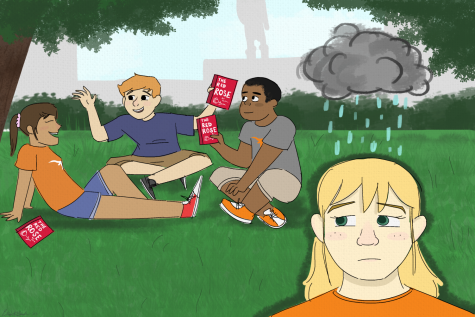Lack of tuition equity
June 26, 2023
At their May meeting, the UT Board of Regents established an up-to percentage of 5.2% for non-resident undergraduate and graduate tuition increases.
“This action by the Board gives UT institutions the latitude to adjust non-resident undergraduate and graduate tuition rates,” a University of Texas System spokesperson said in an email.
The UT system schools can choose whom tuition increases apply to within the two specified groups; however, in-state students remain the exception to the rule because of a 2022 affordability compact, which promises that in-state tuition will remain the same until 2024.
“UT Austin will raise tuition only for non-Texas resident undergraduate students by 5% for the 2023-24 academic year,” Brian Davis, senior manager of issues and crisis communications at the University, said in an email.“There are no changes for in-state undergraduate and graduate students.”
UT Austin should aim to make the tuition rate increase more even by splitting the 5% increase between graduate students and out-of-state students. Out-of-state students already pay around $40,000 in tuition – four times that of in-state students. Even with rising inflation, they should not have to take on fees that in-state and graduate students do not.
Out-of-state students that manage their college costs will be put under a larger strain with this disproportionate tuition increase. Journalism sophomore Becca Youngers is working to pay her parents back for her tuition costs.
“I was exhausted last semester,” Youngers said. “I had my two jobs and a full schedule of classes as a full-time student, as well as just being a college student and being social, it’s impossible.”
UT Austin’s choice to only increase out-of-state tuition targets the 10.3% of the student population who already pay a premium to attend Texas schools. While out-of-state students are willing to pay that much to get an education at UT Austin, raising their tuition rate only singles them out unnecessarily.
“(Texans) prioritize in-state students to really serve (their community),” said Kevin Myers, an out-of-state journalism and radio-television-film junior from Virginia. “It’s just the difference (in tuition) that’s difficult to stomach.”
The 5.2% cap on tuition increases reflects the 2022 Higher Education Price Index (HEPI), reported by Commonfund. The HEPI monitors the change in cost for colleges to maintain the same quality of education and resources each year regardless of inflation rates.
“The reason the regents provided the academic institutions with the option to raise tuition for non-resident undergraduate and graduate students is inflation,” a University of Texas System spokesperson said.
Ideally, UT Austin would maintain the same tuition rate for all students. However, if the school needs to increase tuition to retain their educational quality, then that cost must be split more equally because that increase in tuition comes with a cost. UT Austin should increase both graduate and out-state-of tuition rates by 2.5% to make tuition rates more manageable for out-of-state students.
Eventually, the 88th Texas Legislature will review the affordability compact when they look over their 2024-2025 budget. At that point the Board of Regents should increase in-state tuition by the same rate that out-of-state and graduate student tuition increased, making the tuition rates fairer. But until then, splitting tuition rates will help out-of-state students paying for school on their own or with limited help.
Muthukrishnan is a government and race, indigeneity and migration sophomore from Los Gatos, California.













